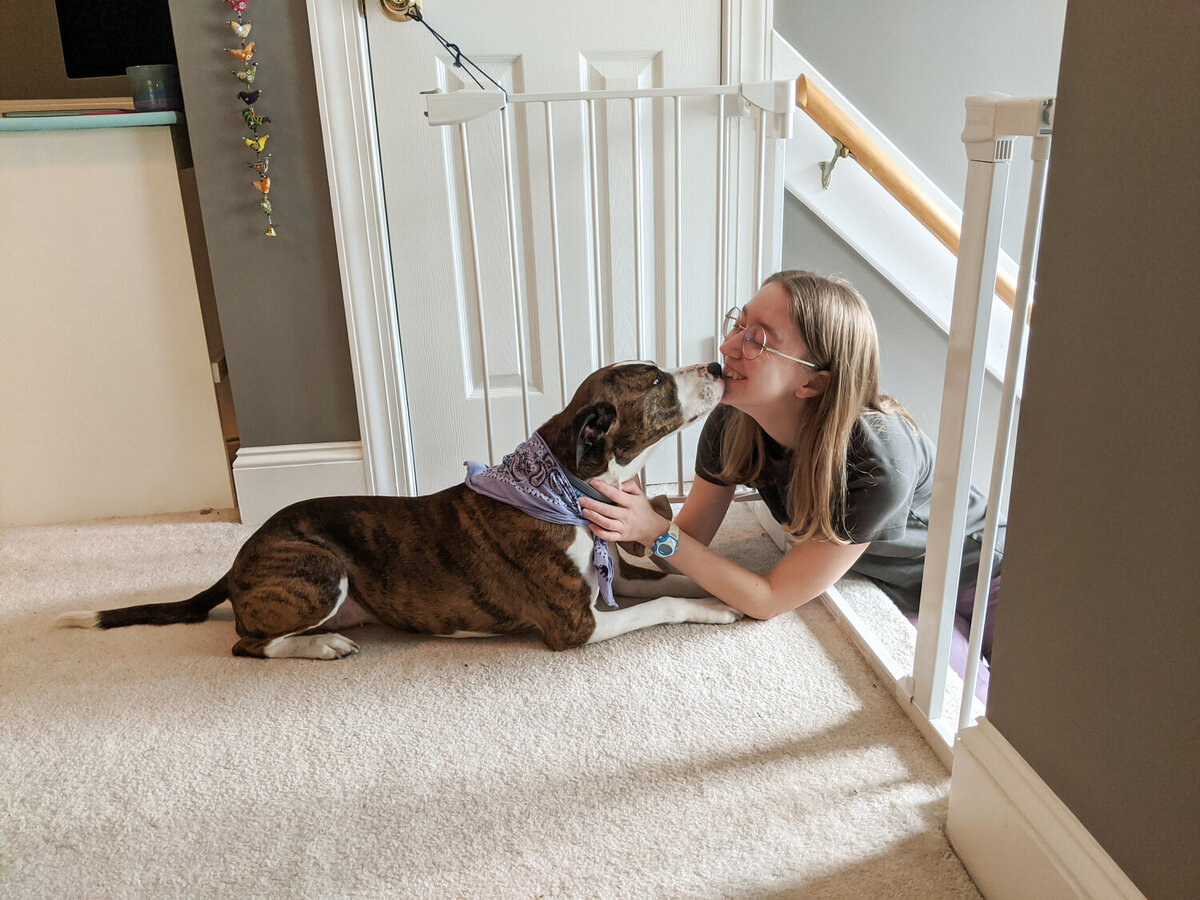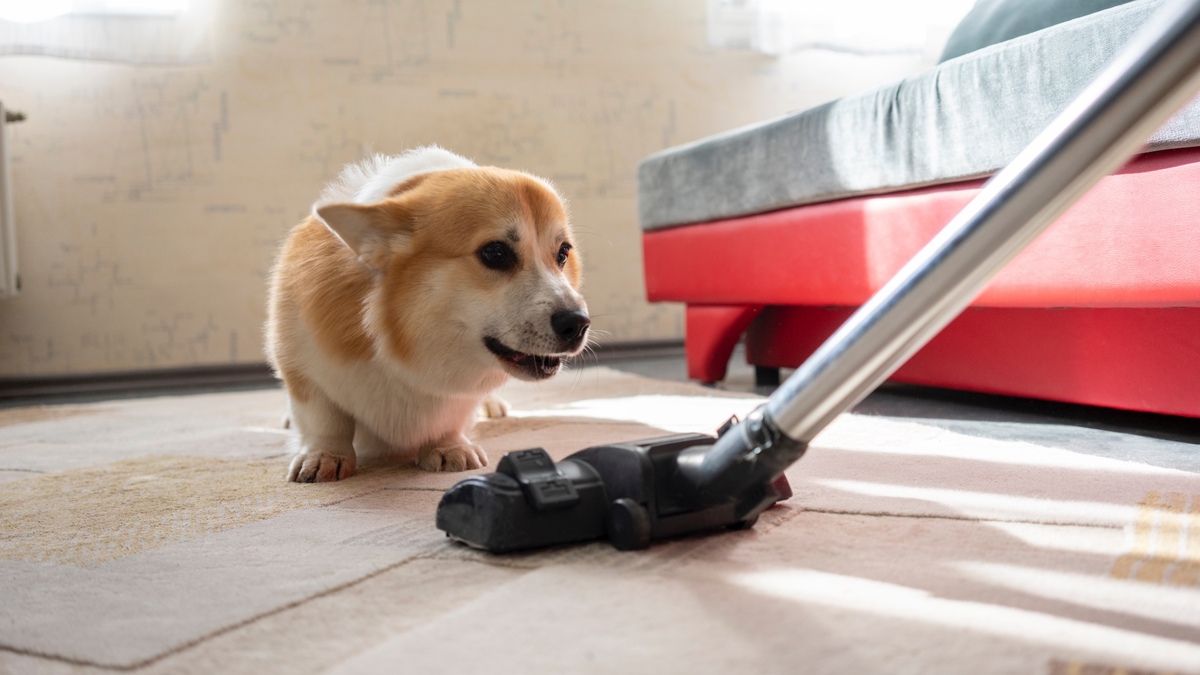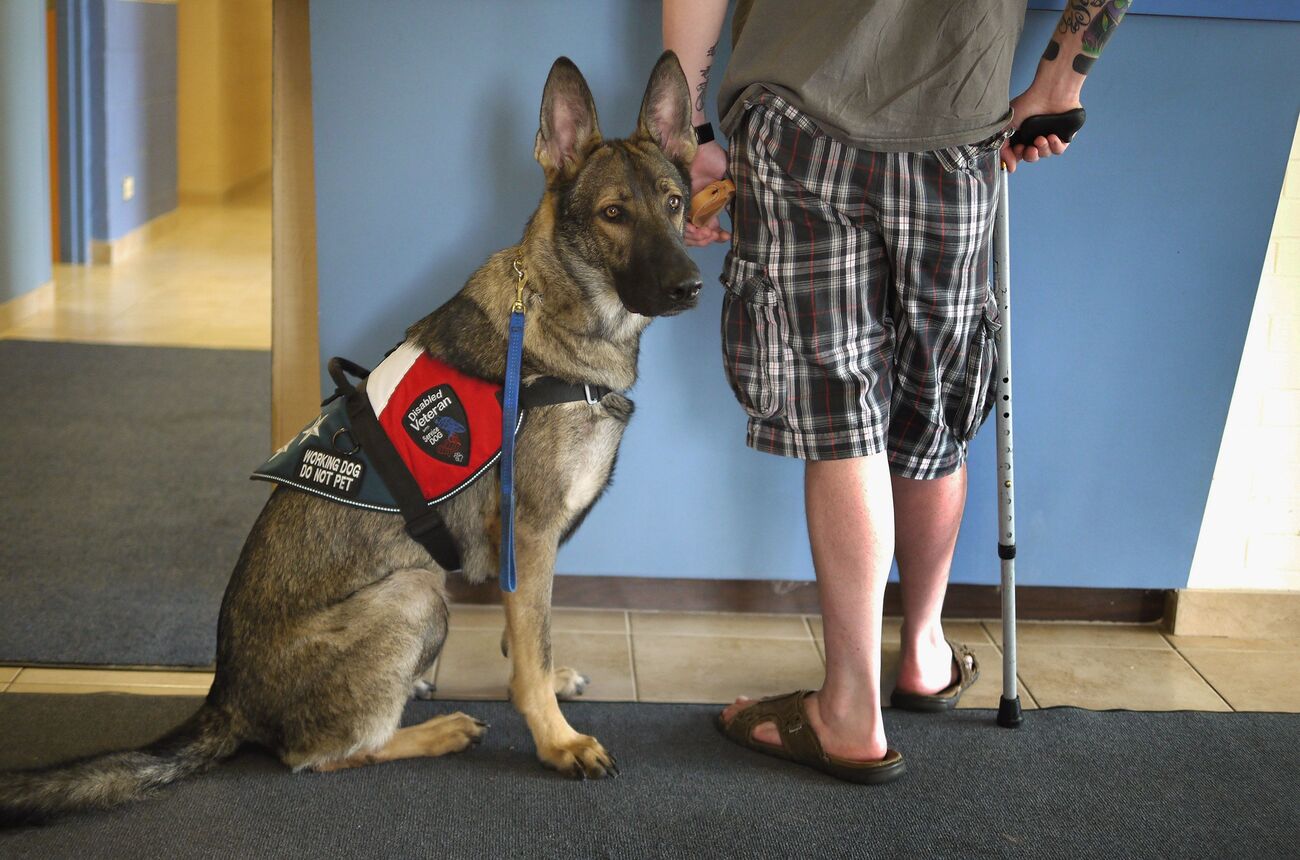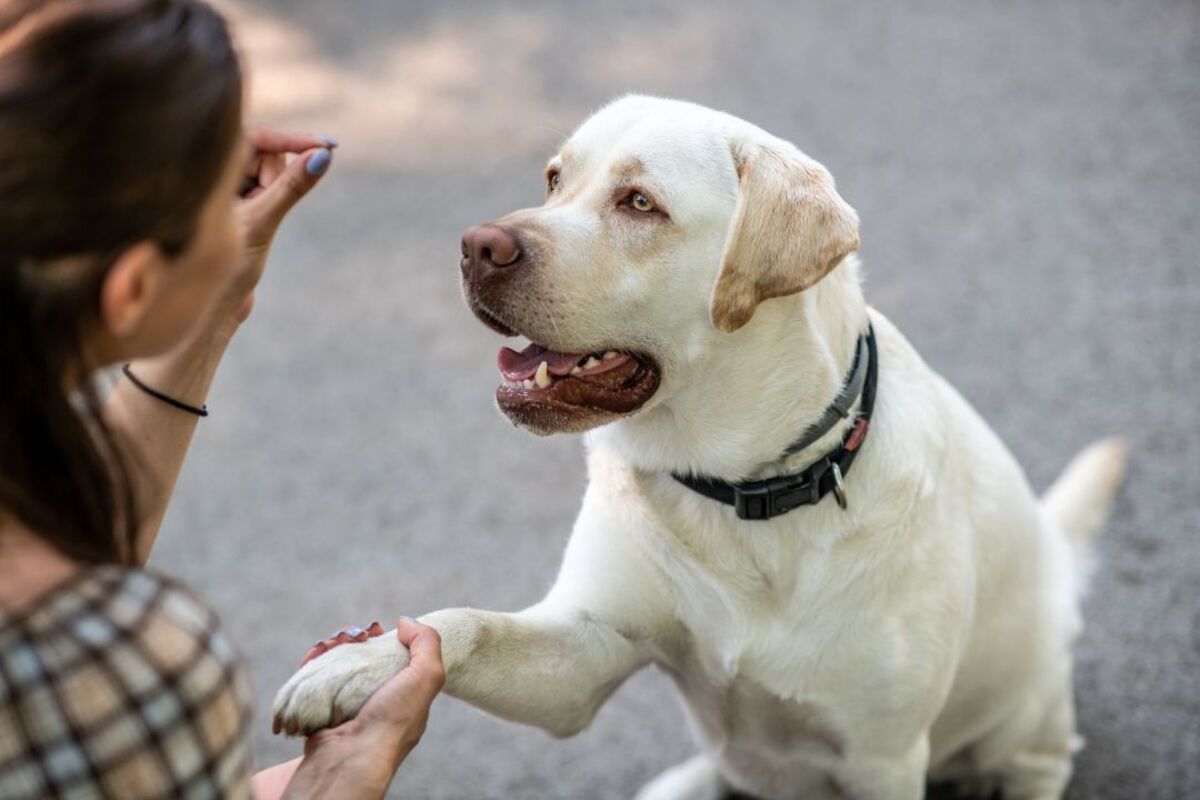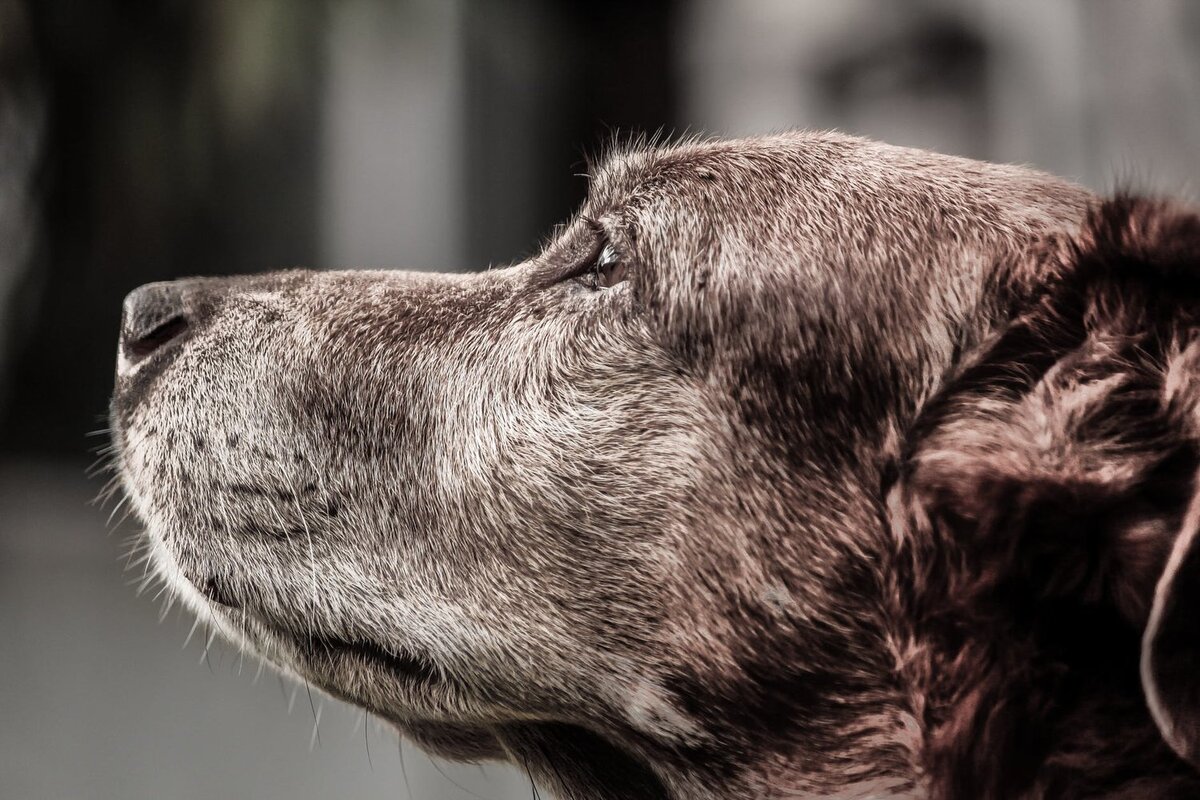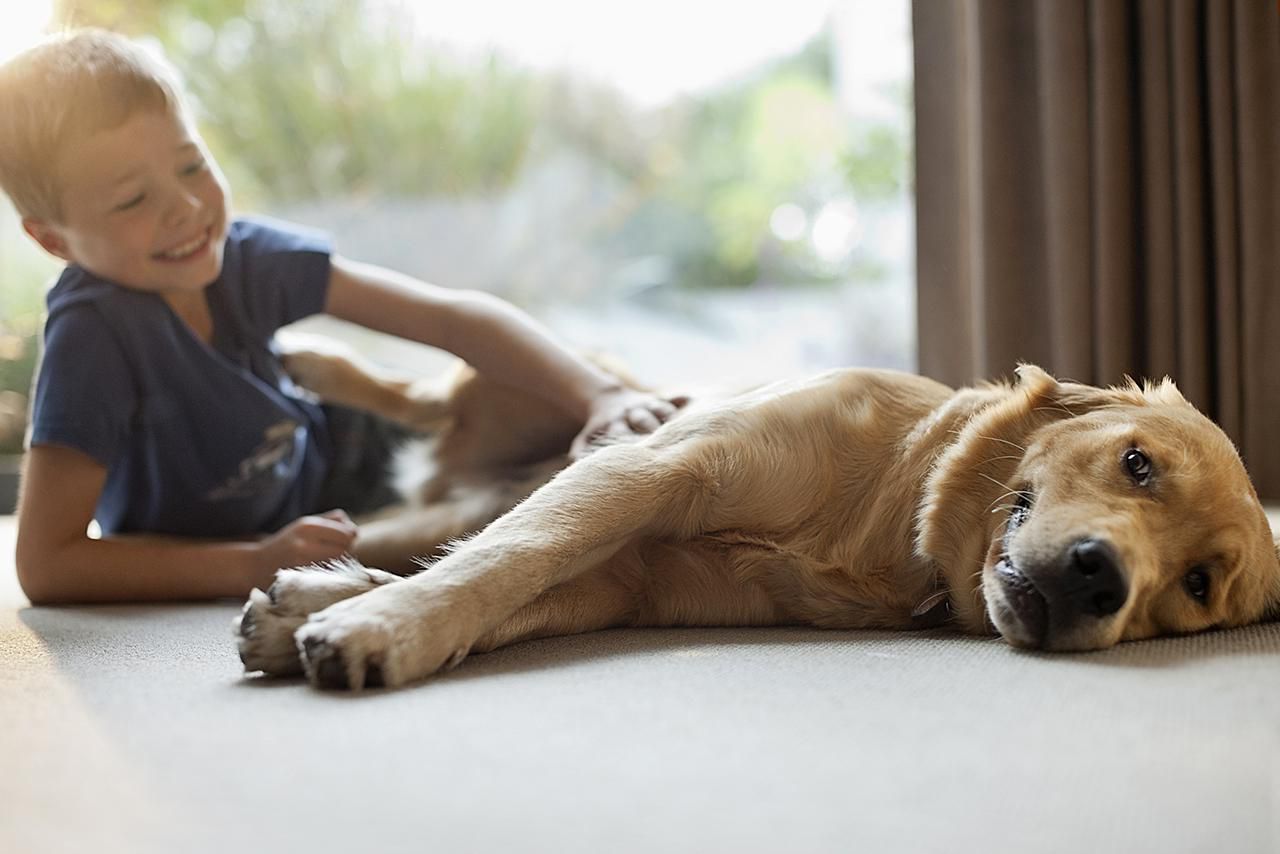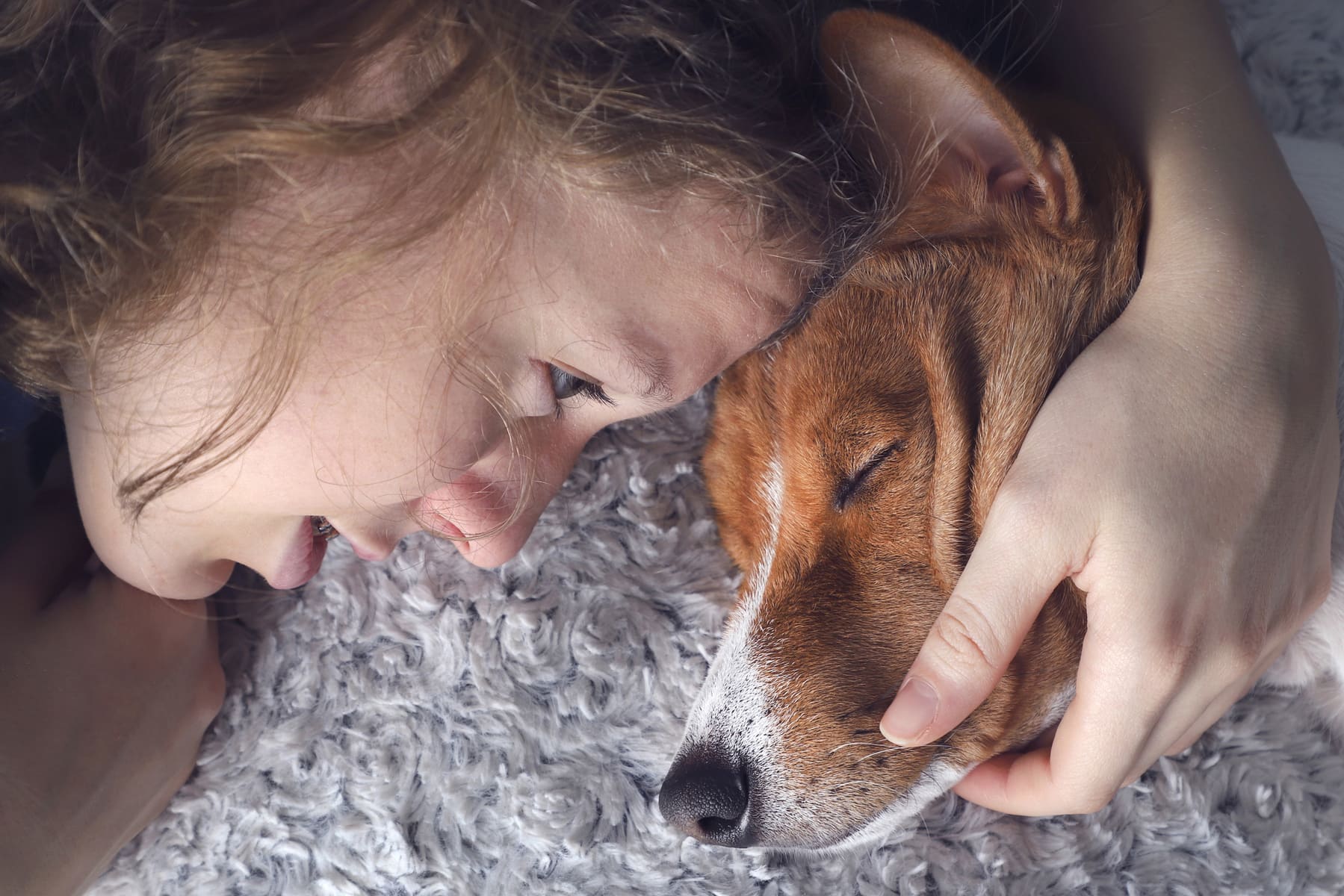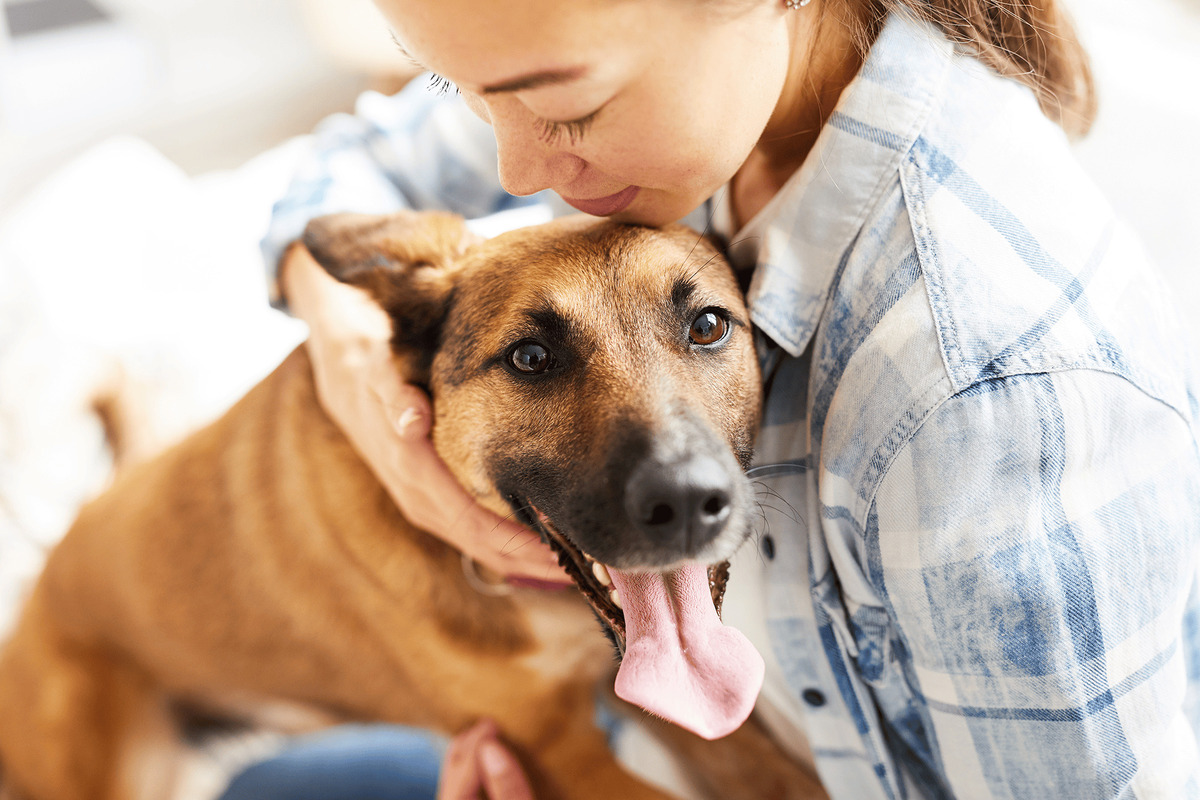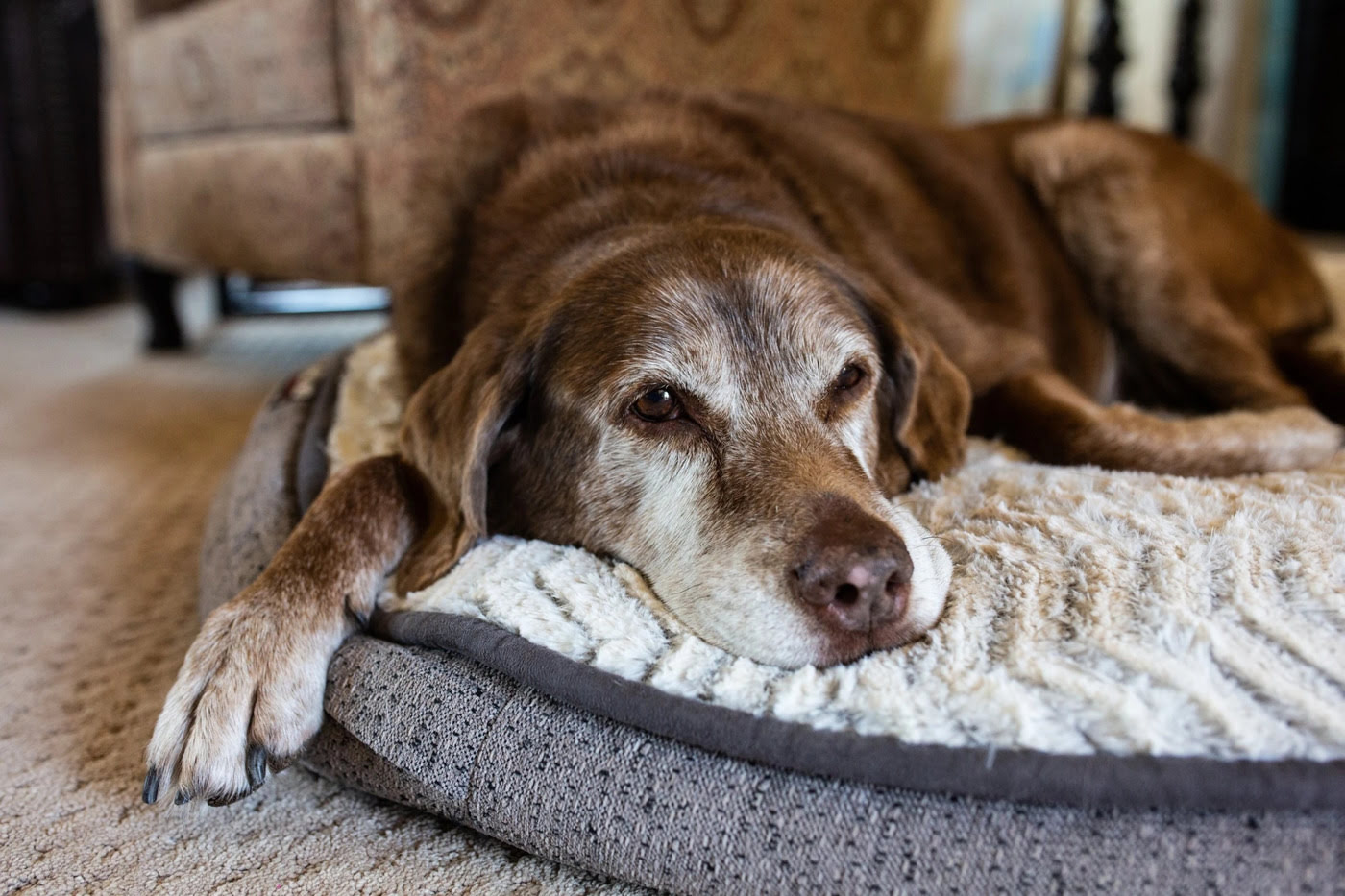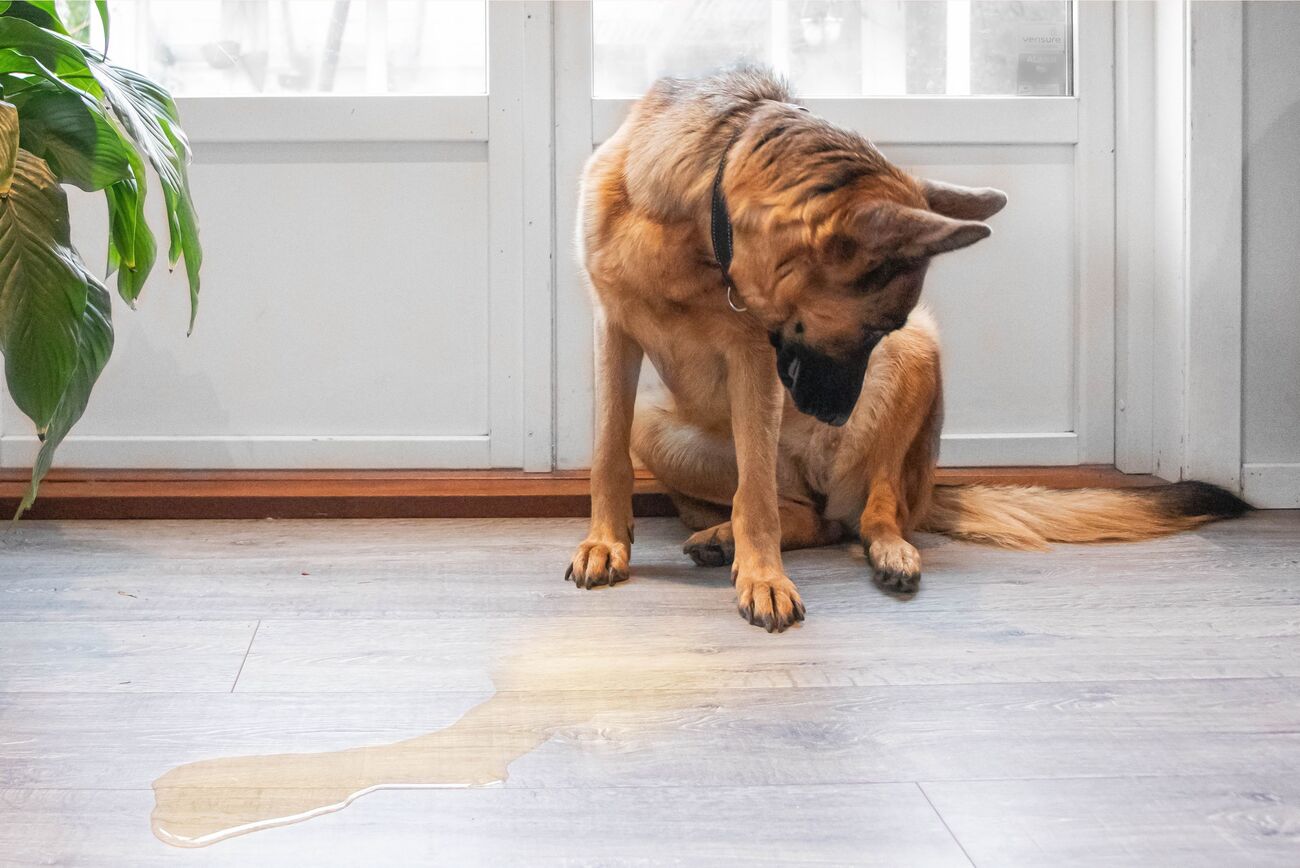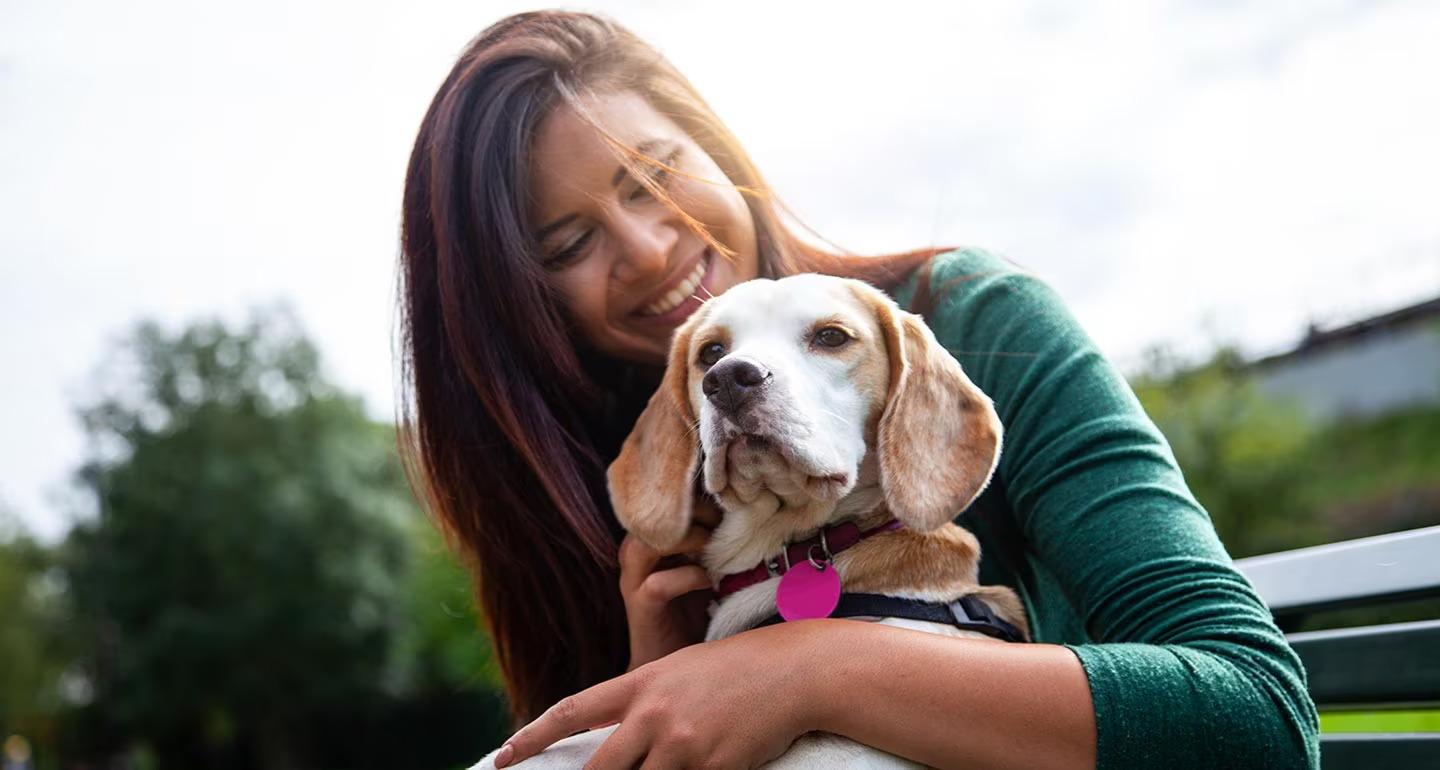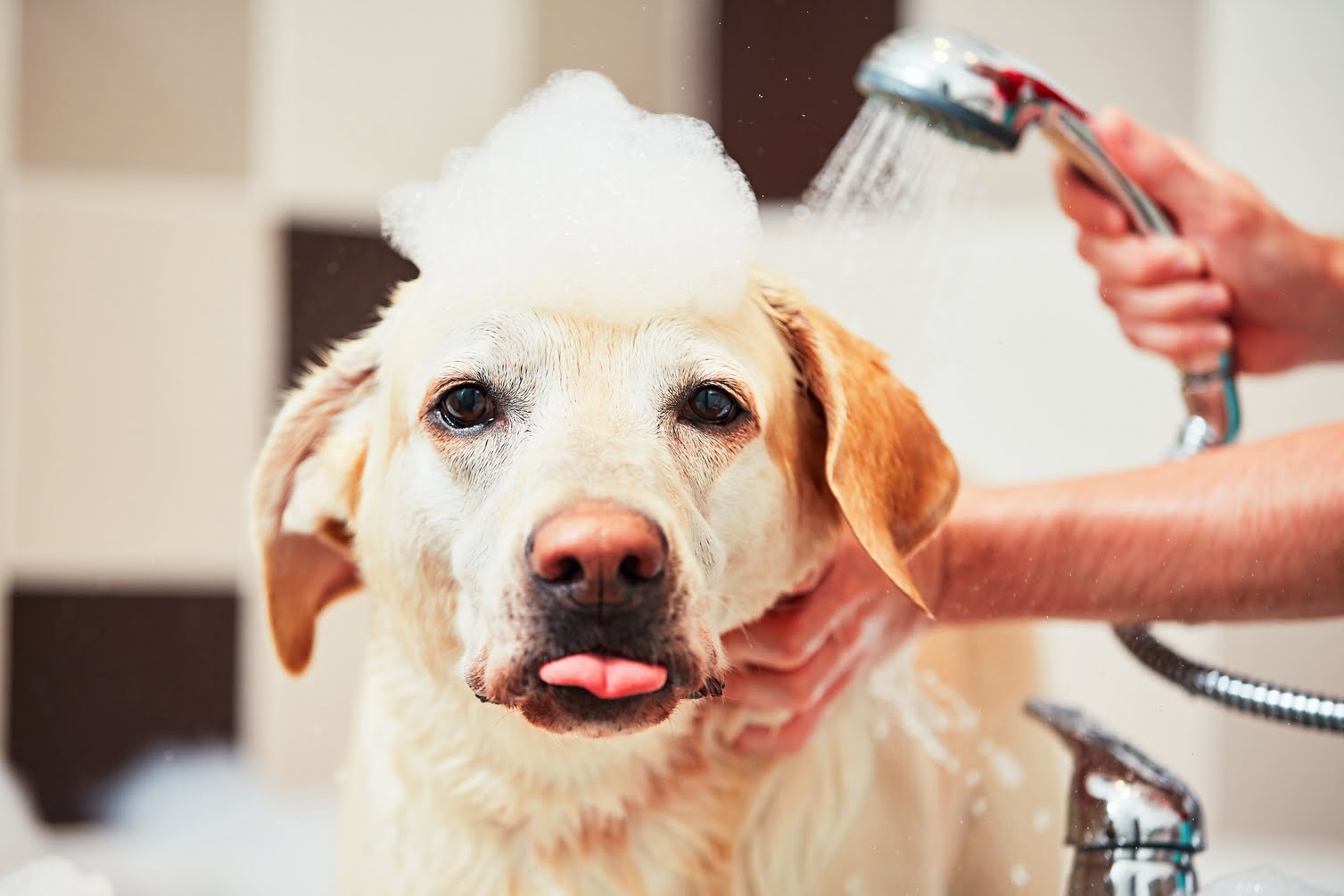Home>Health & Wellness>Behavior & Cognitive Care>How To House Train A Senior Dog
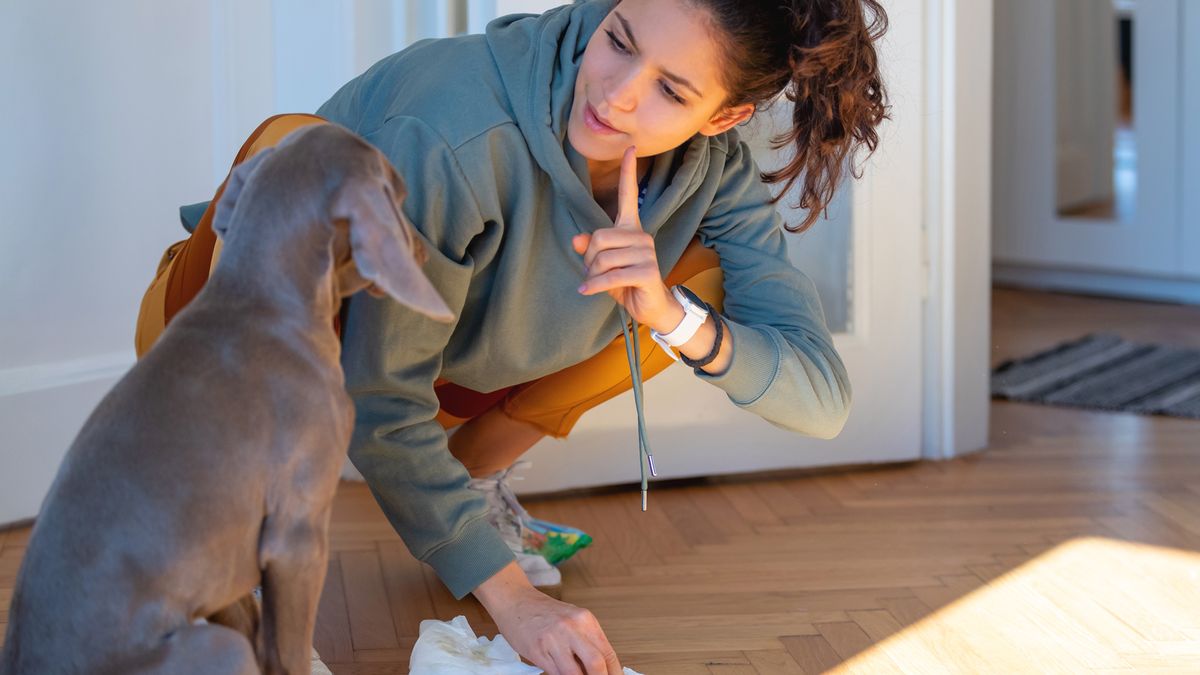

Behavior & Cognitive Care
How To House Train A Senior Dog
Modified: February 21, 2024
Learn effective techniques for house training a senior dog with behavior and cognitive care tips to help your older pup adjust to new routines. Expert advice for successful senior dog house training.
(Many of the links in this article redirect to a specific reviewed product. Your purchase of these products through affiliate links helps to generate commission for Pawsomeoldies.com, at no extra cost. Learn more)
Table of Contents
Introduction
House training a senior dog can be a rewarding yet challenging experience. As our furry companions age, they may encounter physical and cognitive changes that can impact their ability to learn and adapt to new routines. Whether you've recently welcomed a senior dog into your home or have noticed regression in your aging canine companion, understanding the unique considerations of house training for older dogs is essential.
Senior dogs, like humans, may experience a decline in bladder control and overall mobility. This can make it more difficult for them to signal their need to go outside or to hold their bladder for extended periods. Additionally, age-related conditions such as arthritis or cognitive dysfunction can further complicate the house training process.
In this article, we will explore effective strategies for house training senior dogs, taking into account their specific needs and potential challenges. By implementing a combination of patience, understanding, and positive reinforcement, you can help your senior dog adjust to a new routine and maintain a comfortable living environment for both your pet and your household.
Understanding the Challenges of House Training a Senior Dog
House training a senior dog presents unique challenges that require a tailored approach to accommodate their changing needs. As dogs age, they may encounter a range of physical and cognitive changes that can impact their ability to adapt to new routines and maintain bladder control.
One of the primary challenges of house training a senior dog is the potential decline in bladder control. Aging can lead to weakened bladder muscles, making it more difficult for senior dogs to hold their urine for extended periods. This can result in accidents indoors, even if the dog was previously well-trained. Additionally, older dogs may experience an increased frequency of urination, further complicating the house training process.
Furthermore, senior dogs may be more prone to age-related conditions such as arthritis, which can affect their mobility and ability to signal their need to go outside. Arthritic pain may make it challenging for them to move quickly or navigate stairs, hindering their ability to reach the designated outdoor area in time. This physical limitation can contribute to accidents inside the house, requiring a compassionate and understanding approach to address their needs.
Cognitive changes, such as canine cognitive dysfunction (CCD), can also impact a senior dog's house training abilities. Dogs with CCD may experience disorientation, confusion, and memory loss, making it challenging for them to remember previous house training lessons or to recognize the signals indicating the need to eliminate. This cognitive decline requires patience and consistent reinforcement to help senior dogs navigate the house training process effectively.
Understanding these challenges is crucial for developing a compassionate and effective approach to house training senior dogs. By recognizing the impact of aging on their physical and cognitive abilities, pet owners can implement strategies that accommodate their senior dog's specific needs, ultimately fostering a supportive and understanding environment for successful house training.
Establishing a Routine
Establishing a consistent routine is paramount when house training a senior dog. Routine provides structure and predictability, which are especially beneficial for older dogs experiencing physical and cognitive changes. By creating a reliable schedule, you can help your senior dog anticipate bathroom breaks and minimize accidents indoors.
1. Regular Feeding Schedule
Start by establishing a regular feeding schedule for your senior dog. Consistent mealtimes can regulate their digestive system, making it easier to predict when they will need to eliminate. Additionally, feeding your dog at the same times each day can help you anticipate when they will likely need to go outside.
2. Designated Bathroom Breaks
Take your senior dog outside for bathroom breaks at specific intervals throughout the day. This may include first thing in the morning, after meals, and before bedtime. By adhering to a predictable schedule, you can reinforce the habit of eliminating outdoors and reduce the likelihood of accidents inside the house.
Read more: How To Train A Dog To Make Eye Contact
3. Supervised Outdoor Time
When accompanying your senior dog outside, provide them with ample time to explore and relieve themselves. Older dogs may require more time to find a comfortable spot and complete the elimination process. Patiently waiting for them to finish can help prevent accidents indoors and reinforce the association between outdoor time and bathroom breaks.
4. Consistent Verbal Cues
Use consistent verbal cues, such as "go potty" or "do your business," when guiding your senior dog during bathroom breaks. Repetition of these cues can help them understand the purpose of outdoor outings and prompt them to focus on eliminating while outside.
5. Monitoring Water Intake
Keep track of your senior dog's water intake, especially in the evening, to prevent excessive drinking before bedtime. Limiting water consumption close to bedtime can reduce the likelihood of overnight accidents and contribute to successful house training.
6. Accommodating Mobility Challenges
If your senior dog experiences mobility challenges, consider creating easy access to the outdoors. This may involve installing a pet door or providing a ramp for dogs with arthritis or limited mobility. Ensuring that they can reach the designated outdoor area comfortably is essential for reinforcing the house training routine.
By implementing a consistent routine tailored to your senior dog's needs, you can create a supportive environment that facilitates successful house training. Patience, understanding, and a structured schedule are key components in helping your senior dog adjust to a new routine and maintain a comfortable living space for both your pet and your household.
Using Positive Reinforcement
Using positive reinforcement is a fundamental aspect of house training a senior dog. As our canine companions age, their ability to learn and adapt may be influenced by physical and cognitive changes. Positive reinforcement techniques not only encourage desired behaviors but also foster a supportive and nurturing environment for senior dogs undergoing house training.
-
Reward-Based Training: Implementing a reward-based system is a powerful method for encouraging appropriate elimination behavior in senior dogs. When your dog successfully eliminates outside, promptly reward them with verbal praise, affection, or small treats. This positive association reinforces the desired behavior and motivates your senior dog to continue eliminating in the designated outdoor area.
-
Consistent Encouragement: Offering consistent encouragement during bathroom breaks can instill confidence in senior dogs. Use an upbeat and reassuring tone to communicate support and encouragement as they engage in the elimination process. This positive reinforcement helps alleviate any anxiety or uncertainty your senior dog may experience during outdoor outings.
-
Immediate Reinforcement: Timing is crucial when using positive reinforcement. Immediately praise and reward your senior dog after they eliminate in the appropriate outdoor location. This immediate reinforcement strengthens the connection between the desired behavior and the positive outcome, enhancing the effectiveness of the house training process.
-
Avoid Punitive Measures: It's important to avoid punitive measures when house training senior dogs. As aging can bring physical discomfort and cognitive changes, punitive methods can cause distress and confusion. Instead, focus on redirecting and positively reinforcing desired behaviors to create a supportive and stress-free environment for your senior dog.
-
Consistency and Patience: Consistency and patience are key elements of positive reinforcement. Senior dogs may require additional time and repetition to solidify new habits. By consistently using positive reinforcement techniques and remaining patient throughout the process, you can effectively support your senior dog's house training journey.
-
Adaptation to Individual Needs: Every senior dog has unique preferences and sensitivities. Pay attention to your dog's response to different forms of positive reinforcement, whether it's verbal praise, gentle petting, or favorite treats. Tailoring the reinforcement to suit your senior dog's individual preferences can enhance their motivation and willingness to engage in the house training routine.
By incorporating positive reinforcement into the house training process, pet owners can create a nurturing and encouraging environment that supports their senior dog's learning and adjustment. This approach not only facilitates successful house training but also strengthens the bond between pet and owner, fostering a positive and enriching experience for both parties.
Managing Accidents
Accidents are an inevitable aspect of house training, especially when it comes to senior dogs. Understanding how to effectively manage accidents with compassion and patience is crucial for maintaining a supportive environment during the house training process.
-
Prompt Cleanup: When accidents occur indoors, it's essential to promptly clean the affected area. Use enzymatic cleaners specifically designed to neutralize pet odors and stains. Thoroughly removing any residual scent can help prevent repeat accidents in the same location.
-
Avoid Punishment: It's important to refrain from scolding or punishing your senior dog for indoor accidents. As aging can bring physical limitations and cognitive changes, punitive measures can cause distress and confusion. Instead, focus on providing reassurance and redirecting your dog's attention to the designated outdoor area.
-
Observation and Adjustment: Pay close attention to the circumstances surrounding accidents. If you notice a pattern, such as frequent accidents at specific times of the day, consider adjusting the house training routine accordingly. This may involve providing more frequent bathroom breaks or modifying the feeding schedule to better align with your senior dog's elimination needs.
-
Increased Supervision: As senior dogs may have reduced bladder control, increasing supervision can help prevent accidents. Keep a close eye on your dog, especially during periods when they may be more likely to need a bathroom break. This proactive approach can minimize the occurrence of indoor accidents and reinforce the house training routine.
-
Reinforce Outdoor Elimination: Following an accident, take your senior dog outside to the designated bathroom area. This can help reinforce the association between outdoor elimination and positive outcomes. Offering verbal encouragement and potential rewards for eliminating outside can help redirect your dog's focus and reinforce the desired behavior.
-
Consulting a Veterinarian: If accidents persist despite consistent training efforts, consider consulting a veterinarian to rule out any underlying health issues contributing to the accidents. Age-related conditions such as urinary incontinence or cognitive dysfunction may require specialized management strategies to support your senior dog's house training journey.
By effectively managing accidents with understanding and proactive measures, pet owners can navigate the house training process for senior dogs with empathy and patience. Each accident presents an opportunity to reassess the house training approach, reinforce positive behaviors, and create a supportive environment that promotes successful adaptation for senior canine companions.
Seeking Professional Help
Seeking professional assistance can be invaluable when house training a senior dog, especially when facing persistent challenges or complex underlying issues. Professional guidance and support can provide pet owners with tailored strategies and expert insights to address the specific needs of their aging canine companions.
-
Veterinary Consultation: Scheduling a consultation with a veterinarian is a crucial step in the house training journey for senior dogs. A veterinarian can conduct a comprehensive health assessment to rule out any underlying medical conditions that may be contributing to house training difficulties. Age-related issues such as urinary incontinence, arthritis, or cognitive dysfunction can impact a senior dog's ability to maintain bladder control and adhere to a house training routine. By identifying and addressing these health concerns, pet owners can work towards effective management and support for their senior dog's house training needs.
-
Behavioral Specialist: Engaging a certified dog behaviorist or trainer with expertise in senior dog care can offer valuable insights and personalized training plans. These professionals possess the knowledge and experience to assess a senior dog's behavior, cognitive function, and physical limitations, tailoring their approach to address specific house training challenges. Through targeted interventions and behavior modification techniques, a behavioral specialist can help pet owners navigate the complexities of house training senior dogs, fostering a supportive and enriching environment for both the pet and the household.
-
Specialized Training Programs: Some professional training facilities offer specialized programs designed to support senior dogs in their house training journey. These programs may incorporate gentle training methods, environmental adaptations, and individualized care plans to accommodate the unique needs of aging dogs. Enrolling a senior dog in a reputable training program can provide structured guidance and expert supervision, enhancing the likelihood of successful house training outcomes while prioritizing the well-being and comfort of the senior canine participant.
-
Community Support and Resources: Seeking support from local animal welfare organizations, senior dog advocacy groups, or online communities can connect pet owners with valuable resources and recommendations for professional assistance. These networks can provide referrals to trusted professionals, share personal experiences, and offer emotional support to individuals navigating the complexities of house training senior dogs. Accessing a supportive community can alleviate the challenges of the house training process and empower pet owners to make informed decisions regarding their senior dog's care.
By proactively seeking professional help, pet owners can access a wealth of expertise and resources to support their senior dog's house training journey. Collaborating with veterinarians, behavior specialists, and supportive communities can empower pet owners to navigate the unique considerations of house training senior dogs with compassion, knowledge, and a commitment to enhancing the well-being of their beloved canine companions.
Conclusion
In conclusion, house training a senior dog requires a compassionate and tailored approach that acknowledges the unique challenges associated with aging. As our canine companions enter their senior years, they may experience physical limitations, cognitive changes, and potential health conditions that can impact their ability to adapt to new routines and maintain bladder control. Understanding these challenges is essential for pet owners embarking on the house training journey with their senior dogs.
By establishing a consistent routine tailored to the specific needs of senior dogs, pet owners can create a supportive environment that fosters successful house training. Implementing a regular feeding schedule, providing designated bathroom breaks, and accommodating mobility challenges are key components of a structured routine that promotes predictability and minimizes indoor accidents.
Positive reinforcement techniques play a pivotal role in encouraging desired behaviors and nurturing a supportive environment for senior dogs undergoing house training. Reward-based training, consistent encouragement, and immediate reinforcement help motivate senior dogs to engage in appropriate elimination behaviors while strengthening the bond between pet and owner.
Effectively managing accidents with understanding and proactive measures is crucial for maintaining a supportive environment during the house training process. Prompt cleanup, avoidance of punitive measures, and increased supervision can help pet owners navigate the challenges of indoor accidents with empathy and patience.
Seeking professional help, including veterinary consultation, engagement with behavioral specialists, and access to specialized training programs, can provide invaluable support and tailored strategies for addressing the specific needs of senior dogs during the house training process. Collaborating with professionals and accessing community resources empowers pet owners to navigate the complexities of house training senior dogs with knowledge, compassion, and a commitment to enhancing the well-being of their beloved canine companions.
In essence, house training a senior dog is a journey that requires patience, understanding, and a willingness to adapt to the evolving needs of aging dogs. By embracing these principles and implementing tailored strategies, pet owners can create a supportive and enriching environment that promotes successful house training outcomes while prioritizing the comfort and well-being of their senior canine companions.
